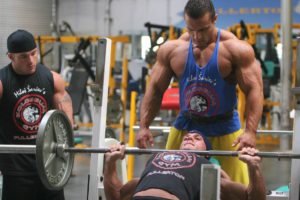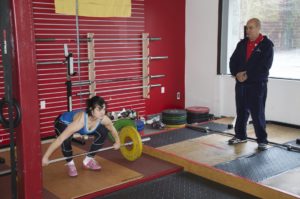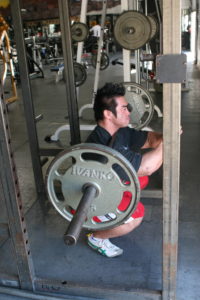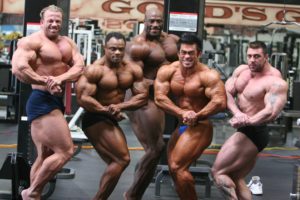
More tips on how to keep your strength training programs on the right track
By Strength Sensei CP
Publication Date: 1987
In my previous article, I discussed five errors strength coaches often make with their athletes. If you avoid those errors, your athletes will enjoy a significant competitive edge over their competition. To step it up a notch, I’ve come up with five more. Let’s get started.
- Too many exercises in a workout.Athletes often perform 12-20 strength exercises in a single workout, but overly long workouts lead to poor strength gains. Soviet weightlifting coach Arkady Nikitich Vorobyevwon Olympic gold twice (1956 and 1960) and went on to become one of the most respected sports scientists in the Iron Game, writing five textbooks and over 200 scientific papers. Vorobyev recommends 2-7 exercises per workout, with an average of 4-6. If an athlete needs more exercises, he or she should increase the number of workouts, but not their length. In fact, elite Bulgarian weightlifters, under the direction of head coach Ivan Abadjiev, train multiple times a day, but the workouts only last about 45 minutes.

To ensure quality work, Soviet weightlifting coaches believed athletes should limit their workouts to about 4-6 exercises per workout. If you’d like to learn more about the Soviet training system, Dr. Alfredo Herrera is a Cuban weightlifting coach who studied the sport in Russia; he is shown here coaching elite US lifter Gwendolyn Sisto. You can learn from Dr. Herrera in his hands-on seminar at the Strength Sensei training & educaiton center, May 15-17.
- High intensities in the early stages of training. Research has shown high intensities (repetitions 1-6, 82-100 percent of one maximum repetition) are optimal for strength development, so coaches should prescribe such intensities. However, the general consensus in Eastern Bloc countries is that the first year of strength training should be devoted to sets of at least eight repetitions to develop general strength. I understand that Bulgarian weightlifting coaches recommend sets of 10-20 repetitions (60-75 percent of one repetition maximum) for movements other than the Olympic lifts during the first year of training. This is to develop a conditioning base that translates into greater work capacity in the following years.
How much weight should you use to determine optimal training intensity? The answer is simple: poundages for a specific exercise should be determined by trial and error. For example, if you can’t perform 10 reps on an exercise, it’s too heavy; if you can do 21 reps or more, it’s too light.
- Athletes cheat on exercises.It’s been said in gym circles that the exceptional development of the trapezius and shoulder muscles of football players comes not from using high tonnage in shrugs and upright rows, but from spotting their training partners on the bench press! Sometimes, the form or technique of bench presses is so poor that you could say the bench presser is spotting his partner on the upright row!
The mistake here is that athletes are often so concerned with how much weight they’re lifting, they “cheat” to lift the poundage. This robs the muscle of its much-needed overload. An example of cheating is raising the hips off the bench in bench pressing, which eliminates the major intention of the exercise – to effectively stress the pectorals. Bottom line: emphasize proper form for optimal results!
- Poor understanding of biomechanics.Failure to understand basic biomechanics has led coaches to prescribe the wrong exercises. For example, many volleyball and basketball coaches believe the vertical jump can be increased by performing leg extensions in training, since they believe quadriceps strength increases will benefit jump height. However, the gluteus maximus muscles are also involved in optimal jumping performance. The glutes should be trained by exercises such as clean pulls and squats, which are similar to jumping action.

If you want to build powerful legs and increase your vertical jump, there is no substitute for front squats and back squats. Showing good form in a deep front squat is Hidetada Yamagishi, the first Japanese bodybuilder to compete in the prestigious Mr. Olympia contest.
- The “running-is-enough-for-my-legs” syndrome. Sprinting can increase hypertrophy and strength, but research and empirical findings demonstrate that sprinting cannot replace the overload provided by squats and pulls. This syndrome is perceived by strength coaches as a poor excuse by athletes to avoid the hard but rewarding work of squatting and pulling movements. The solution is obvious.

Elite bodybuilders who work out hard and avoid training mistakes are always ready to strike a pose. This impromptu group photo, and the other two bodybuilding photos in this article, were taken by Milos Sarcev, a former Mr. Olympia competitor.
Going to the gym with an attitude that you know you will succeed is good, but sometimes to get positive results from training you need to take a negative approach by eliminating what you are doing wrong. You know from this article, and my previous one on this topic, a total of 10 mistakes your athletes should not make in training and how to correct them to achieve maximum results. Now get to the gym and train not just harder, but smarter!
